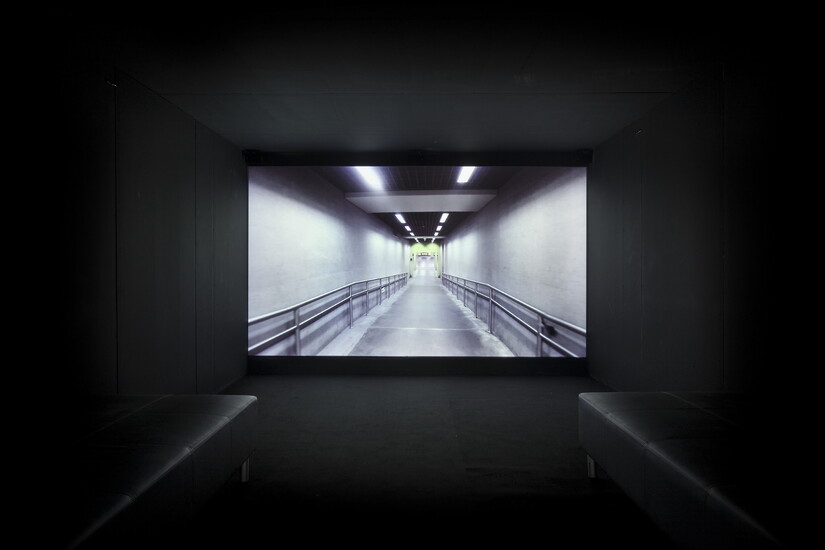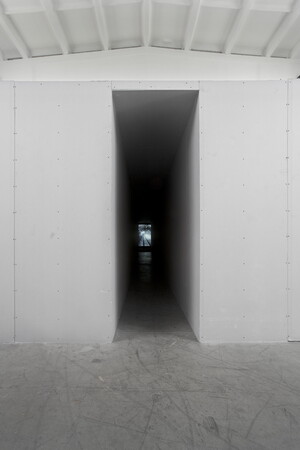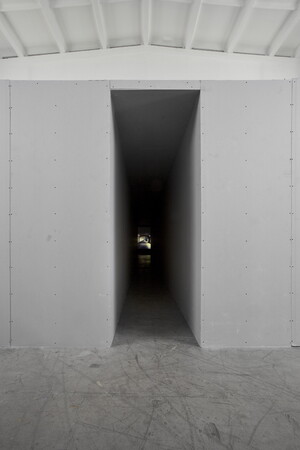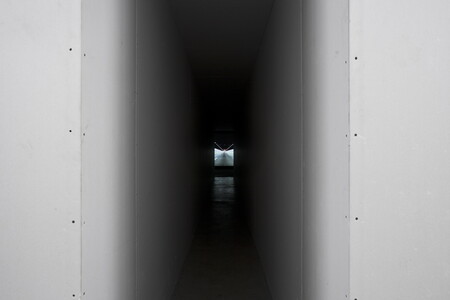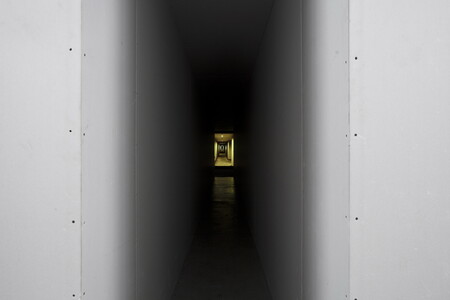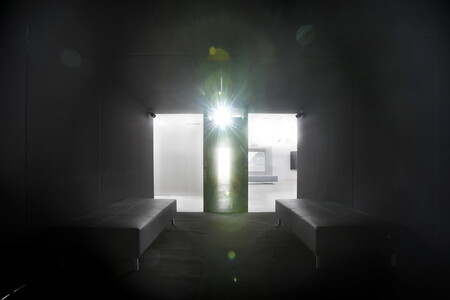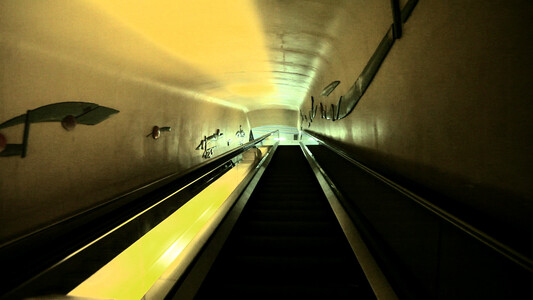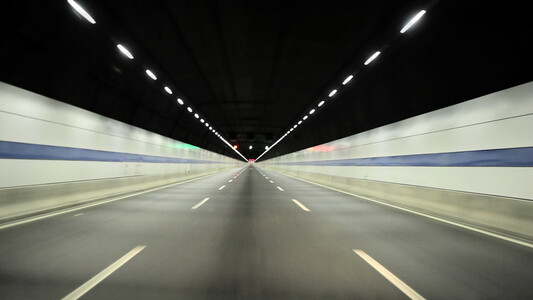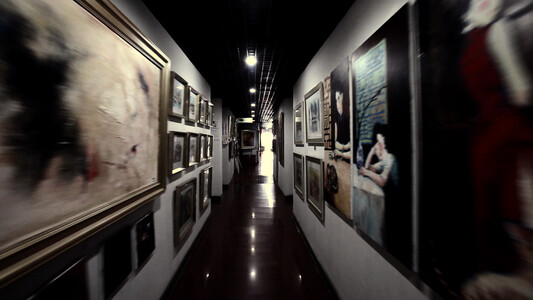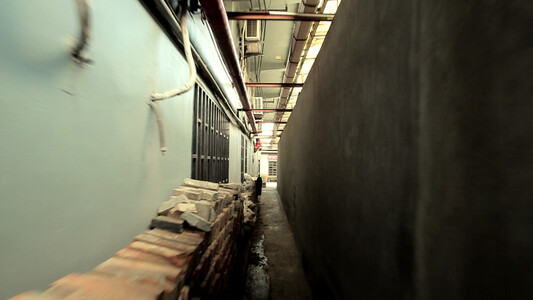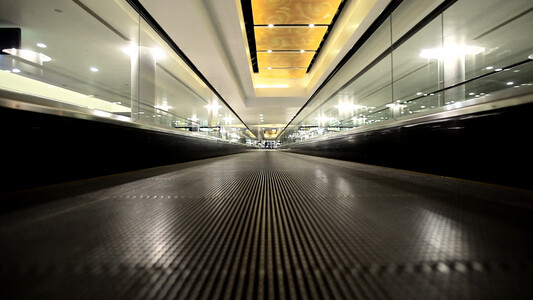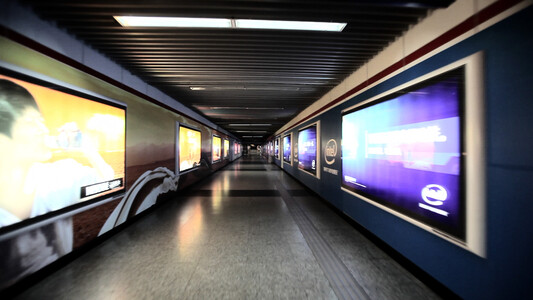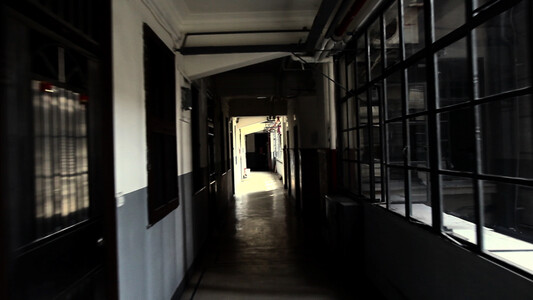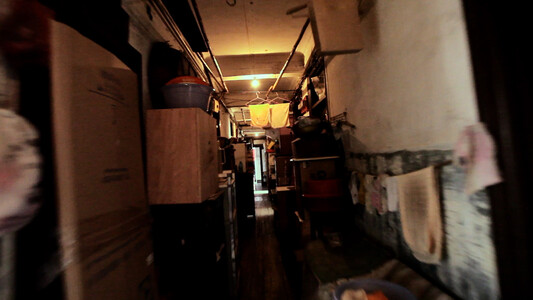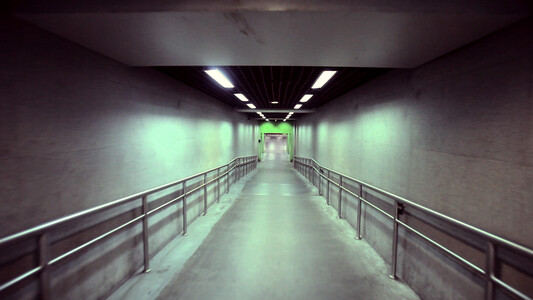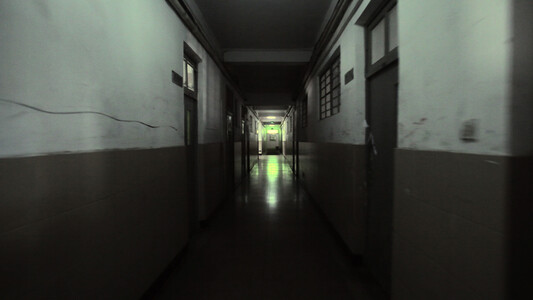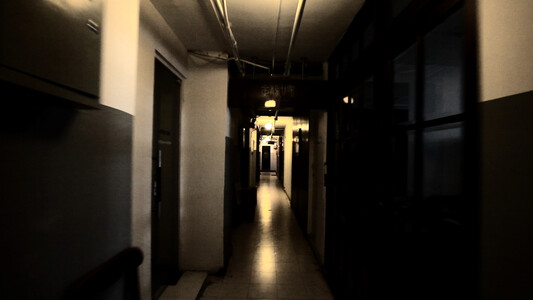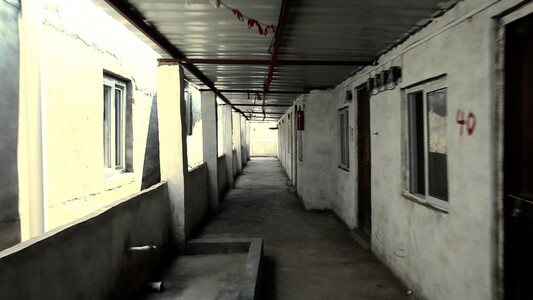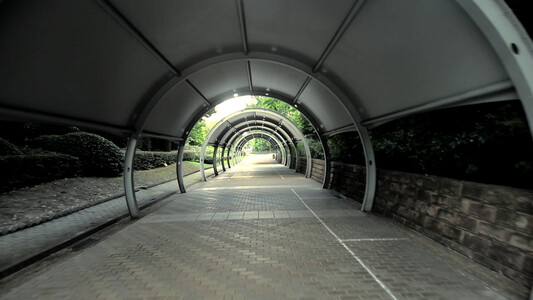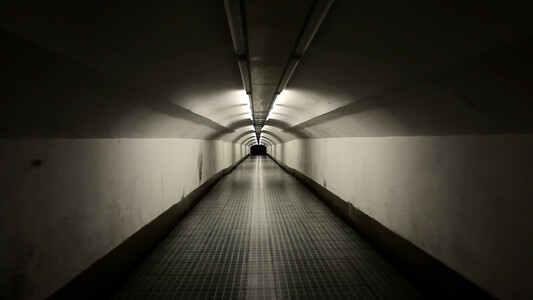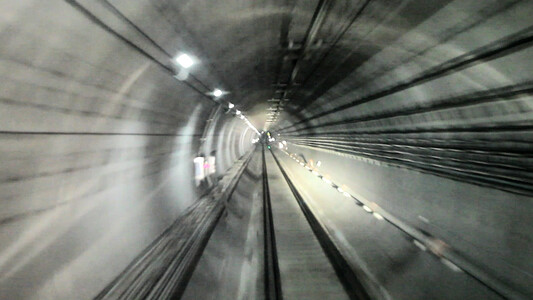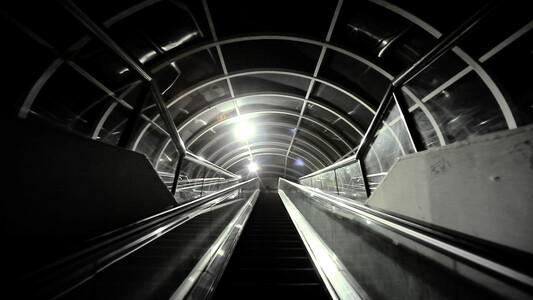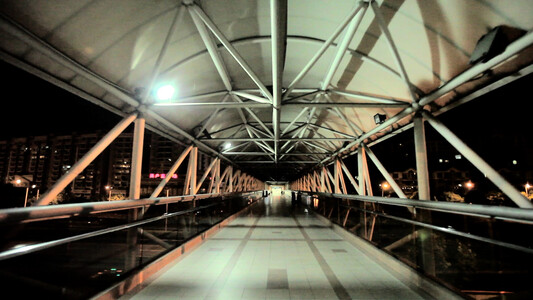In this video YANG Zhenzhong has approached the problem of space and perception allowing the audience to both participate in and observe his artistic manipulation of urban space creating a unique relationship between the viewer and the viewed. Not unlike his previous series Sleepwalking Is a Therapy I, II, and III from 1992, 1997, and 2007 respectively, Passage only provides the audience with a narrow frame of vision and minimal external noise. Both videos are only accompanied by the sound of human breathing. Also similar to the previous project, the camera is positioned in such a way that the viewer is made to feel as if they are experiencing the setting first hand; perceiving through the eyes of the artist. The setting laid out by YANG is a series of corridors, tunnels, passages, elevators, gaps found in schools, airports, subways, hotels, pedestrian bridges, dormitory, parks, and libraries. They are of all sizes and lengths, and not only desolate and deserted, but also bleak and grey, lacking in vibrant color and very different from reality of the city. The audience is undoubtedly disturbed by the empty and silent city they have been placed in, that is to say silent except for the subtle and disagreeable mechanic noises of the urban area. The installation is presented in a way that mirrors the video. The viewer is asked to walk through the end of the exhibition towards an extremely narrow corridor; only one may enter at a time. This further builds on the effect of thereness; the audience is both in the tunnel and watching the tunnel. The narrow frame of vision may be understood as a metaphor for the narrow vision experienced in the urban life. In YANG’s piece the audience becomes one with the video, they are both viewing and experiencing the ever changing, uncontrollable, and narrow-minded urban space.
Richelle Simon in July 2013
Detail pictures:

